Abstract
The fundamental question "Are sequential data random?" arises in myriad contexts, often with severe data length constraints. Furthermore, there is frequently a critical need to delineate nonrandom sequences in terms of closeness to randomness--e.g., to evaluate the efficacy of therapy in medicine. We address both these issues from a computable framework via a quantification of regularity. ApEn (approximate entropy), defining maximal randomness for sequences of arbitrary length, indicating the applicability to sequences as short as N = 5 points. An infinite sequence formulation of randomness is introduced that retains the operational (and computable) features of the finite case. In the infinite sequence setting, we indicate how the "foundational" definition of independence in probability theory, and the definition of normality in number theory, reduce to limit theorems without rates of convergence, from which we utilize ApEn to address rates of convergence (of a deficit from maximal randomness), refining the aforementioned concepts in a computationally essential manner. Representative applications among many are indicated to assess (i) random number generation output; (ii) well-shuffled arrangements; and (iii) (the quality of) bootstrap replicates.
Full text
PDF
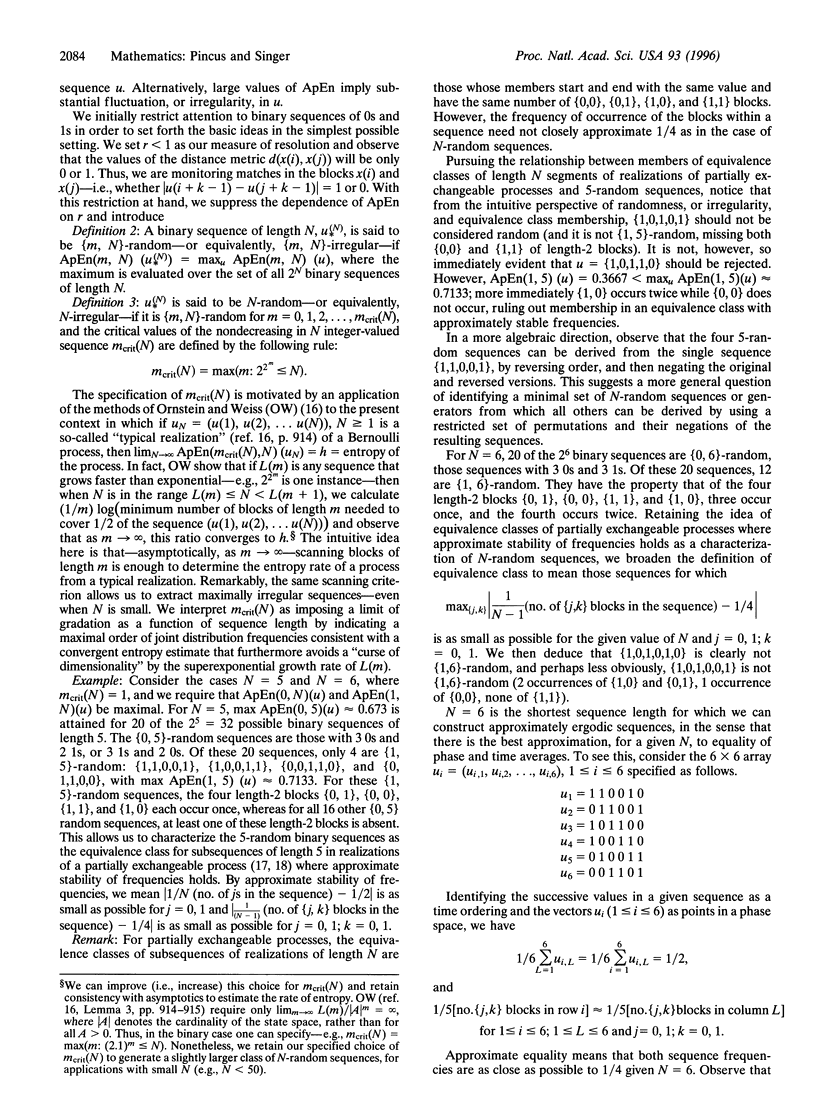
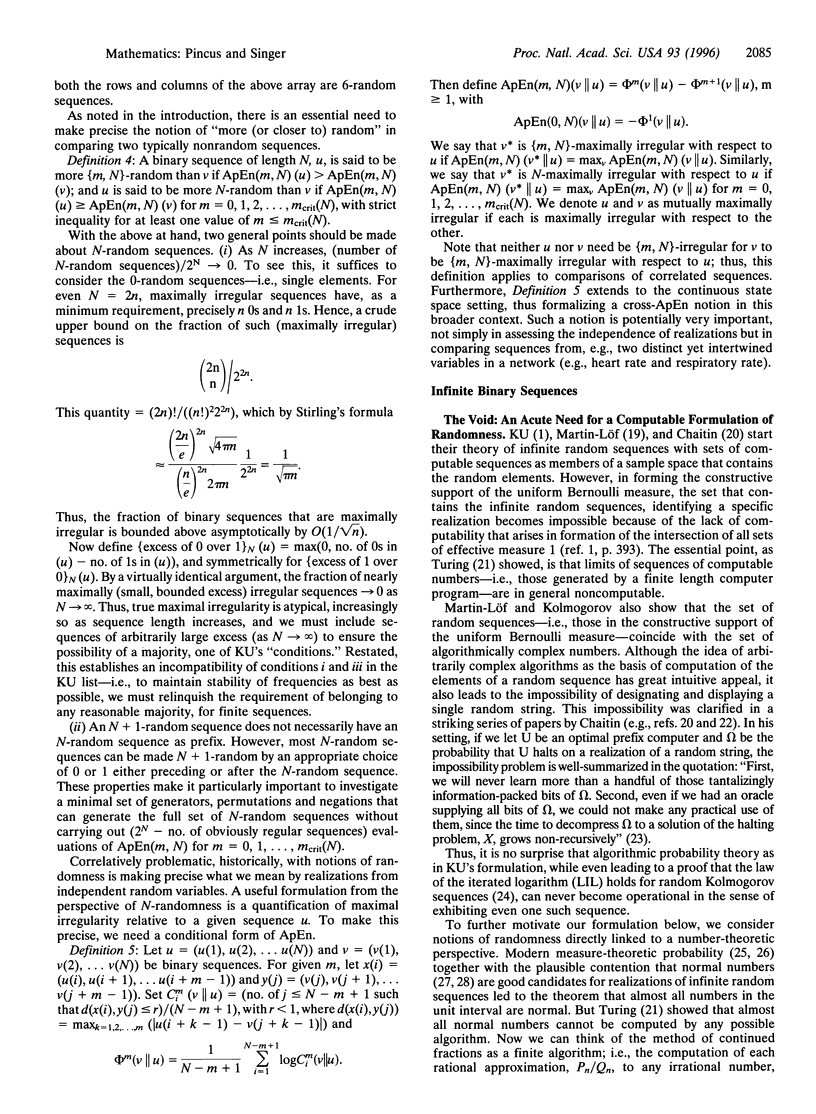
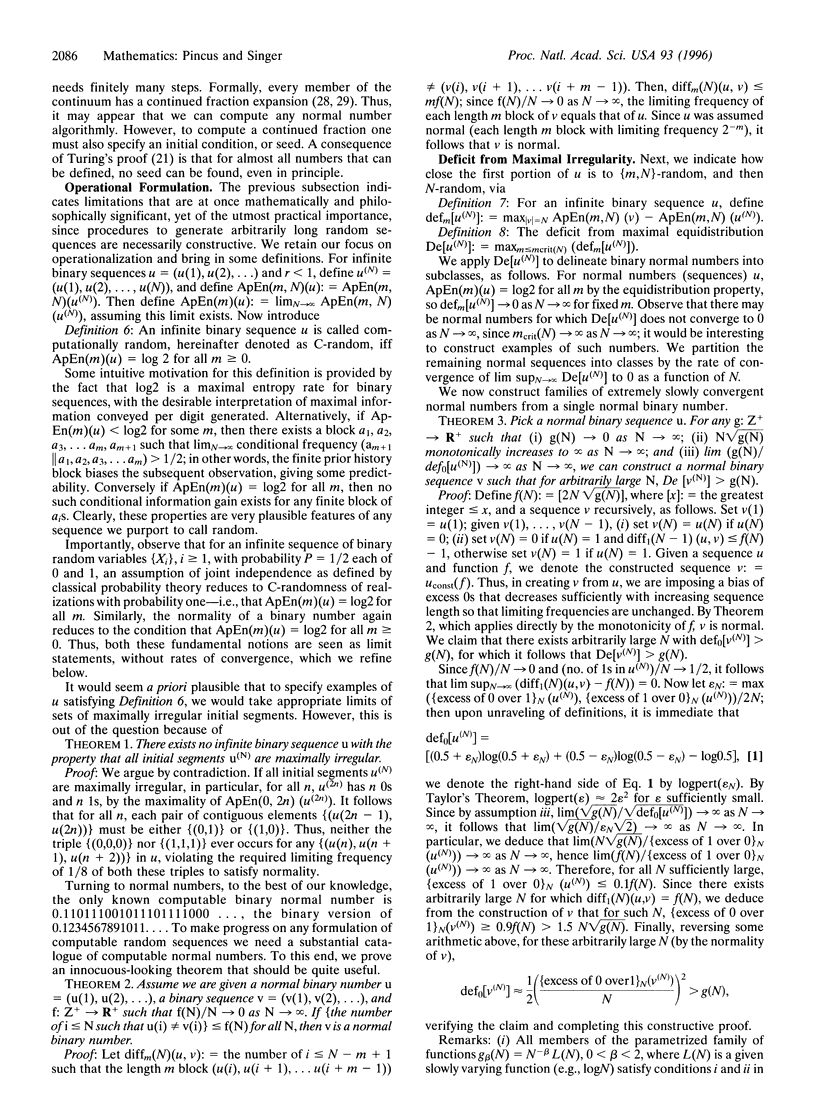
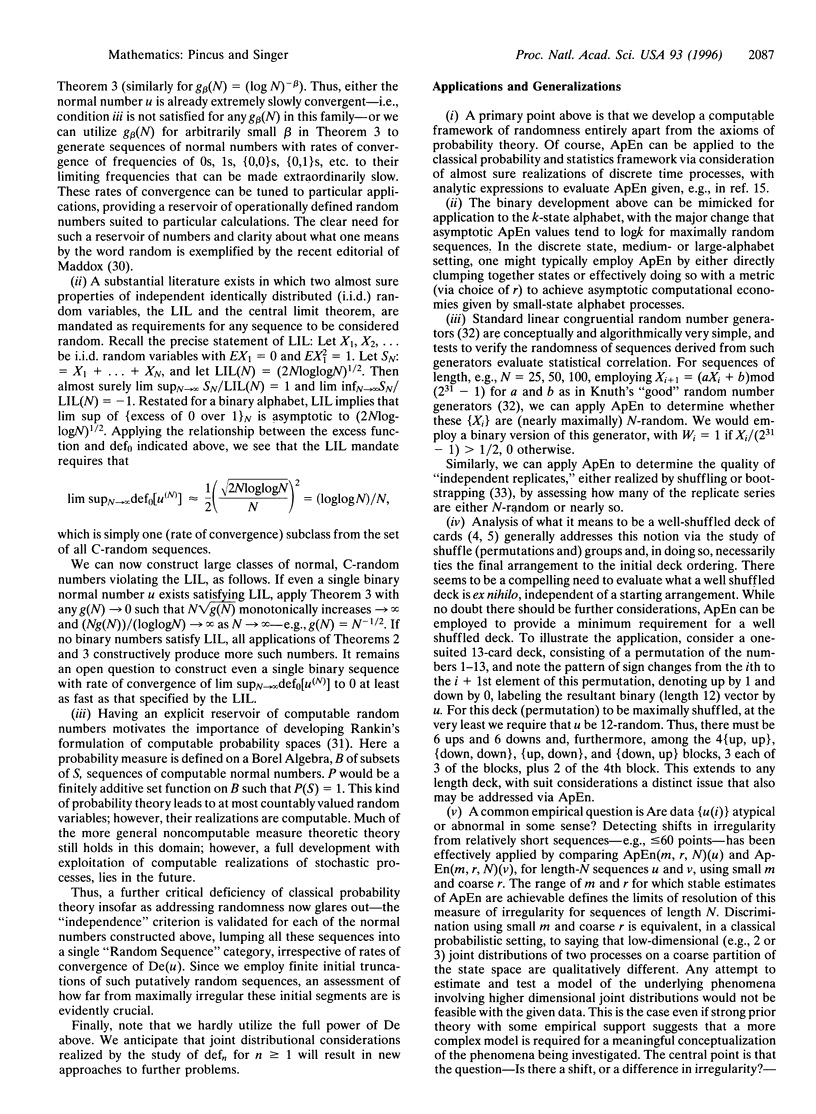
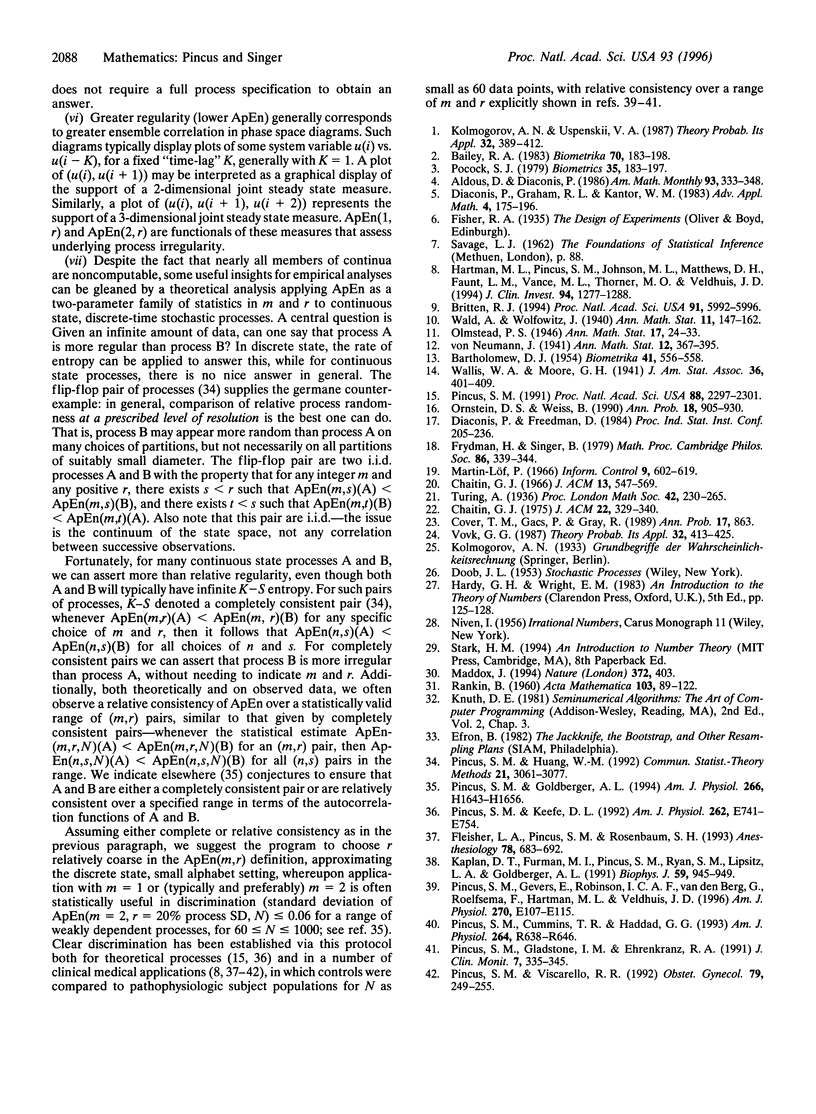
Selected References
These references are in PubMed. This may not be the complete list of references from this article.
- Britten R. J. Evolutionary selection against change in many Alu repeat sequences interspersed through primate genomes. Proc Natl Acad Sci U S A. 1994 Jun 21;91(13):5992–5996. doi: 10.1073/pnas.91.13.5992. [DOI] [PMC free article] [PubMed] [Google Scholar]
- Fleisher L. A., Pincus S. M., Rosenbaum S. H. Approximate entropy of heart rate as a correlate of postoperative ventricular dysfunction. Anesthesiology. 1993 Apr;78(4):683–692. doi: 10.1097/00000542-199304000-00011. [DOI] [PubMed] [Google Scholar]
- Hartman M. L., Pincus S. M., Johnson M. L., Matthews D. H., Faunt L. M., Vance M. L., Thorner M. O., Veldhuis J. D. Enhanced basal and disorderly growth hormone secretion distinguish acromegalic from normal pulsatile growth hormone release. J Clin Invest. 1994 Sep;94(3):1277–1288. doi: 10.1172/JCI117446. [DOI] [PMC free article] [PubMed] [Google Scholar]
- Kaplan D. T., Furman M. I., Pincus S. M., Ryan S. M., Lipsitz L. A., Goldberger A. L. Aging and the complexity of cardiovascular dynamics. Biophys J. 1991 Apr;59(4):945–949. doi: 10.1016/S0006-3495(91)82309-8. [DOI] [PMC free article] [PubMed] [Google Scholar]
- Pincus S. M. Approximate entropy as a measure of system complexity. Proc Natl Acad Sci U S A. 1991 Mar 15;88(6):2297–2301. doi: 10.1073/pnas.88.6.2297. [DOI] [PMC free article] [PubMed] [Google Scholar]
- Pincus S. M., Cummins T. R., Haddad G. G. Heart rate control in normal and aborted-SIDS infants. Am J Physiol. 1993 Mar;264(3 Pt 2):R638–R646. doi: 10.1152/ajpregu.1993.264.3.R638. [DOI] [PubMed] [Google Scholar]
- Pincus S. M., Gevers E. F., Robinson I. C., van den Berg G., Roelfsema F., Hartman M. L., Veldhuis J. D. Females secrete growth hormone with more process irregularity than males in both humans and rats. Am J Physiol. 1996 Jan;270(1 Pt 1):E107–E115. doi: 10.1152/ajpendo.1996.270.1.E107. [DOI] [PubMed] [Google Scholar]
- Pincus S. M., Gladstone I. M., Ehrenkranz R. A. A regularity statistic for medical data analysis. J Clin Monit. 1991 Oct;7(4):335–345. doi: 10.1007/BF01619355. [DOI] [PubMed] [Google Scholar]
- Pincus S. M., Goldberger A. L. Physiological time-series analysis: what does regularity quantify? Am J Physiol. 1994 Apr;266(4 Pt 2):H1643–H1656. doi: 10.1152/ajpheart.1994.266.4.H1643. [DOI] [PubMed] [Google Scholar]
- Pincus S. M., Keefe D. L. Quantification of hormone pulsatility via an approximate entropy algorithm. Am J Physiol. 1992 May;262(5 Pt 1):E741–E754. doi: 10.1152/ajpendo.1992.262.5.E741. [DOI] [PubMed] [Google Scholar]
- Pincus S. M., Viscarello R. R. Approximate entropy: a regularity measure for fetal heart rate analysis. Obstet Gynecol. 1992 Feb;79(2):249–255. [PubMed] [Google Scholar]
- Pocock S. J. Allocation of patients to treatment in clinical trials. Biometrics. 1979 Mar;35(1):183–197. [PubMed] [Google Scholar]


